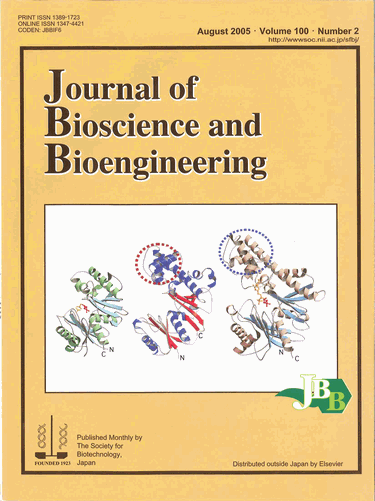Journal of Bioscience and Bioengineering Vol. 100, No. 2 (2005)
Vol. 100, August 2005
Hypothesis on the evolution of glucose kinases.
A putative evolutionary process for glucose kinases through the acquisition of flexible subdomains, which are enclosed by dotted lines, was postulated based on the three-dimensional structures of Arthrobacter sp. KM1 inorganic polyphosphate/ATP-glucomannokinase (left), Escherichia coli ATP-specific glucokinase (middle), and human ATP-specific hexokinase (right).
The hypothesis emphasizes that glucose kinases evolved from an ancestral “polyphosphate/ATP-dependent glucokinase” into an ATP-specific hexokinase, via an ATP-specific glucokinase, thereby losing polyphosphate-utilizing capability and acquiring flexible subdomains of increasing sizes, which enable enzymes to be regulated more precisely and ingeniously.
Related article: Kawai, S., Mukai, T., Mori, S., Mikami, B., and Murata, K., “Hypothesis: structure, evolution, and ancestor of glucose kinases in the hexokinase family“, J. Biosci. Bioeng., vol. 99, 320-330 (2005).
⇒JBBアーカイブ:Vol.107 (2009) ~最新号
⇒JBBアーカイブ:Vol. 93(2002)~Vol. 106(2008)



.gif)